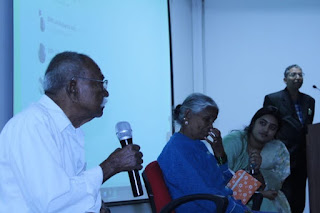In Healthcare, where every decision impact lives, it’s critical to ensure tools we create are truly serving the people who use them- patients, providers and staff-alike.
Why is end-user driven technology critical in healthcare?
• Traditional healthcare tools were developed in silos.
• Now, tools are co-designed with patients, clinicians, and administrators.
EVOLUTION OF HEALTHCARE TECHNOLOGY
• Early Stages: Electronic Medical Records (EMRs) for basic documentation.
• Advancements: AI, IoT, and telemedicine revolutionizing healthcare.
• Current State: User-centric designs addressing specific needs.
Principles of a User-Driven Ecosystem
1. User-Centric Design: Tools that integrate seamlessly into workflows.
2. Iterative Development: Refining tools through constant user feedback.
3. Data Accessibility: Clear, actionable data for better decision-making.
4. Interoperability: Connecting devices, apps, and records efficiently.
Role of Technology for Key Users
• Patients: Wearables and mobile apps for proactive health management.
• Clinicians: AI tools assisting diagnostics and streamlining data.
• Administrators: Predictive analytics for resource planning and efficiency.
Challenges in Building User-Driven Ecosystems
1. Resistance to Change: Training and support are crucial for adoption.
2.
3. Data Privacy Concerns:
4. Technology Fatigue:
Future Trends in Healthcare Technology
1. Personalized Healthcare: AI and genomics driving tailored treatments.
2. Smart Hospitals: IoT-enabled systems optimizing care delivery.
3. Voice Technology: Hands-free tools improving efficiency.
4. Blockchain: Secure data sharing among stakeholders.













Comments
Post a Comment